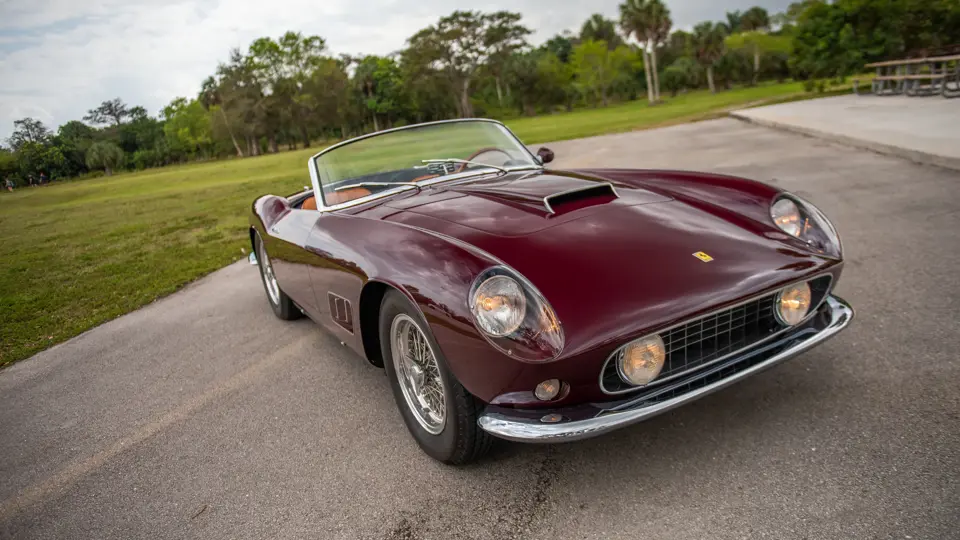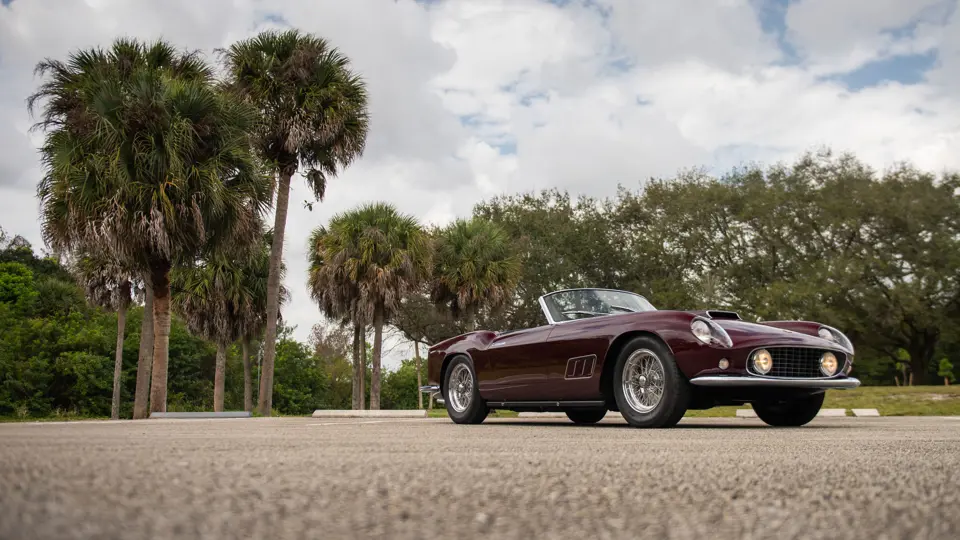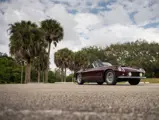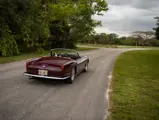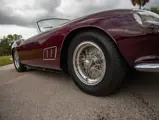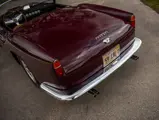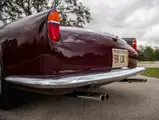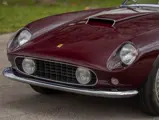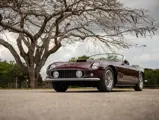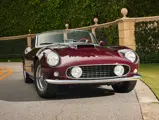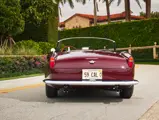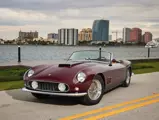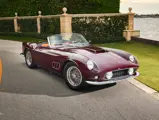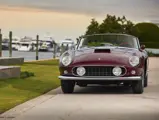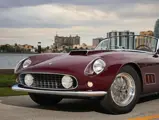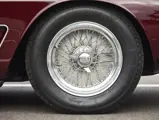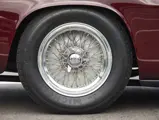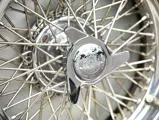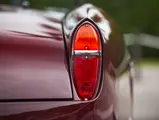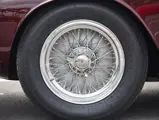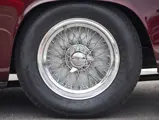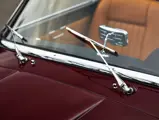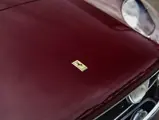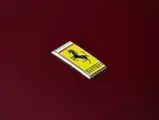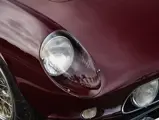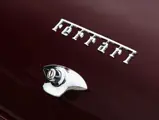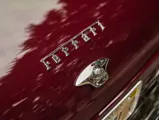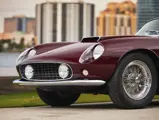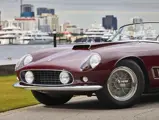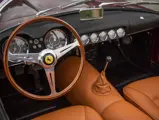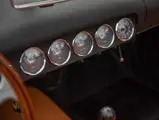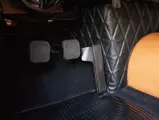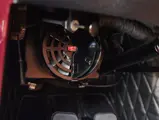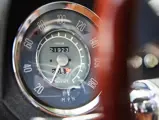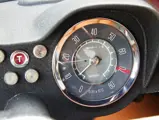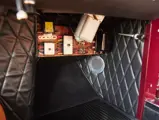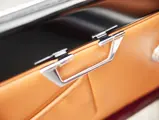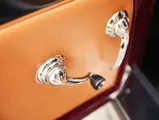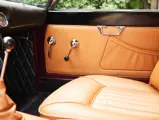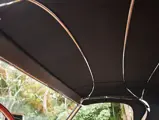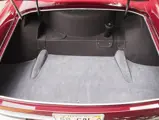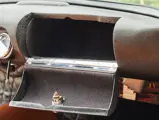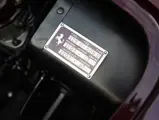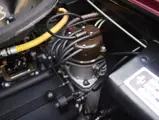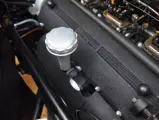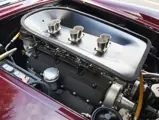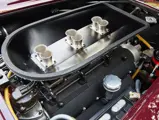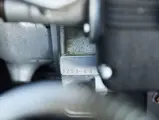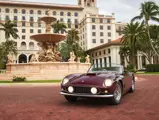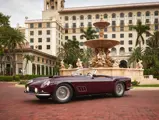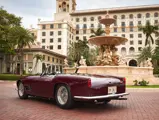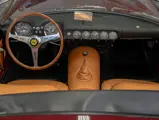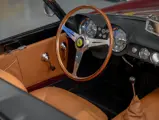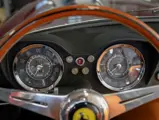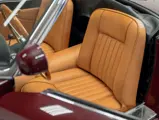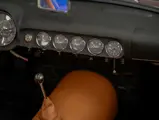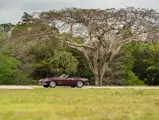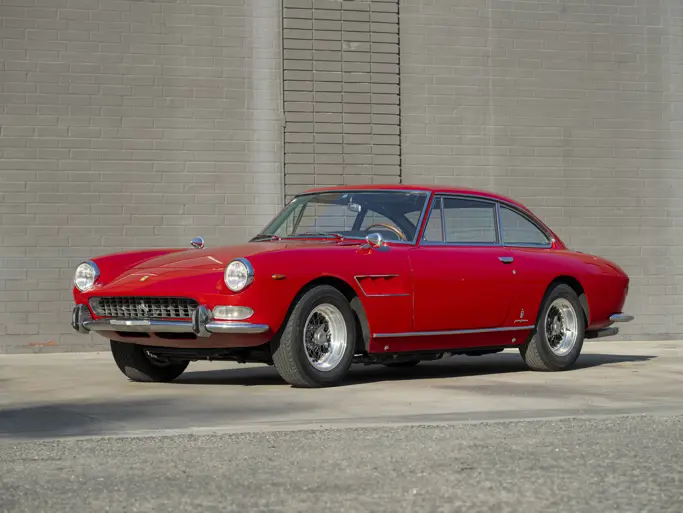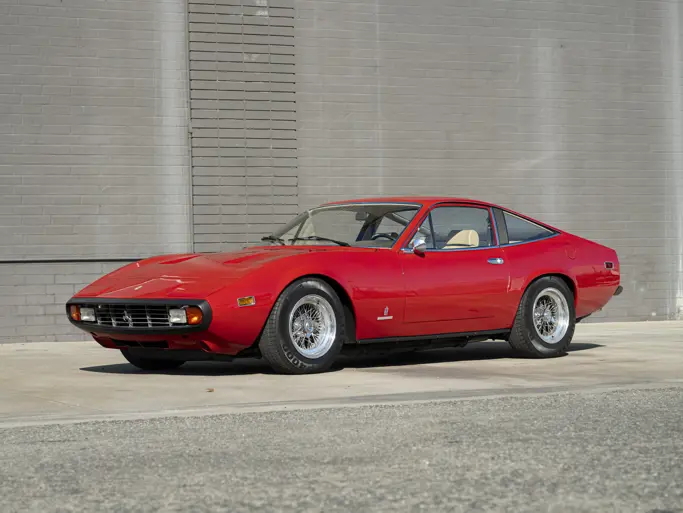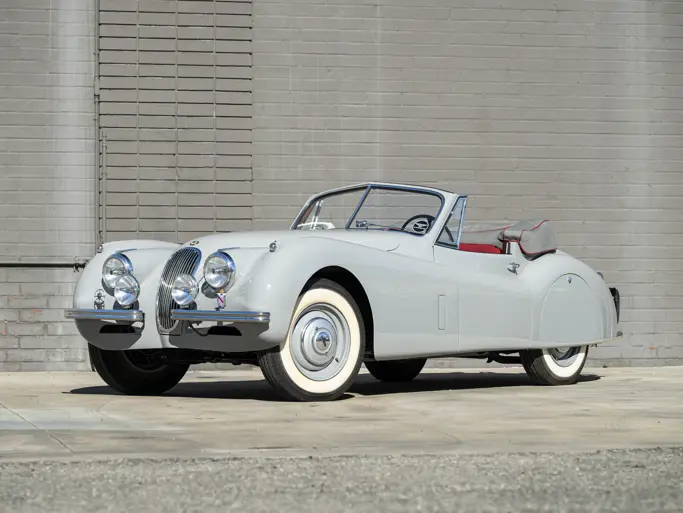
1959 Ferrari 250 GT LWB California Spider by Scaglietti
{{lr.item.text}}
Sold
{{bidding.lot.reserveStatusFormatted}}
- The rarest and most comfortable driving version of the covered headlight California Spider
- Factory-equipped with competition engine
- Ferrari Classiche certified to retain its numbers-matching engine, gearbox, and rear axle
- Fastidiously maintained 2012 restoration by marque specialists
- Awarded at the Salon Privé, Concorso d’Eleganza Villa d’Este, The Quail, A Motorsports Gathering, and the Cavallino Classic
- Featured in the September 1959 issue of Sports Car Illustrated
- Documented with original factory records, former owner’s correspondence, magazine articles, period photos, and service/restoration invoices
- Accompanied by original manuals and a complete tool kit
- Eligible for the most exclusive and coveted events worldwide
- A breathtaking example of Maranello’s most legendary open grand touring model
CALIFORNIA DREAMING
The proverbial sports car pantheon is full of models that have achieved one kind of metric or another, but at the very peak of Olympus two words loom larger than most any other—California Spider. Ferrari had achieved great heights with its 250 GT platform ever since the FIA changed displacement limitations following the disastrous 1955 24 Hours of Le Mans, finding remarkable success in sports car competition with models such as the Tour de France and Testa Rossa. Alongside these wondrous racing machines, Maranello built a magnificent line-up of roadgoing 250 GT coupes and cabriolets that came to define the peak of engineering and style.
In 1957, however, one man dared to push the boundaries even further. John von Neumann was a California-based importer and co-founder of the local sports car club who had become a regular distributor for Ferrari sales on the West Coast. He proposed the idea of a dual-use open Ferrari that could be driven to the track and raced before being gently driven home, in the tradition of Maranello’s great berlinettas. Official Ferrari importer Luigi Chinetti recognized the merit of von Neumann’s idea and before long a new 250 GT appeared: the California Spider.
Sportier than the concurrent 250 GT Cabriolet, the California Spider shared the Tour de France berlinetta’s chassis, and like that model the open coachwork was designed and built by the legendary Sergio Scaglietti. Most examples featured steel bodies with aluminum hoods and decklids, and they could be ordered with covered headlamps and competition-tuned engines. Scaglietti’s coachwork was a revelation of the potential proportions of the 250 GT, with beautifully sculpted sensuous fenders complemented by unmistakable louvered vents just aft of the front wheels. This was a Ferrari built for every sense to enjoy; wondrous to hear, viscerally thrilling in performance, and beautiful to admire.
Initially built upon Ferrari’s 2,600-millimeter wheelbase chassis, which was retroactively referred to as the Long Wheelbase, the early California Spiders made a splash in GT competition—taking a class win at Sebring in 1959 and finishing 5th overall at Le Mans a few months later. As the model was named for the California market that had been its inspiration, many examples were exported to the United States, and these cars duly made their mark at SCCA events.
Fifty examples of the California Spider were built on the long-wheelbase chassis before Ferrari introduced its short-wheelbase platform, to which the California Spider was adapted. While the later cars undoubtedly have a following of their own, it is interesting to note how the design was more elegant and harmonious in the original 2,600-millimeter guise. Smoother and more luxurious, the long-wheelbase examples drive with superior ride quality, and are arguably more stylish.
In short, the original LWB California Spider was the super-luxury choice of a true gentleman, sophisticated, powerful, and uniquely stylish. In many respects this was a car less suited for barreling down the Mulsanne Straight than it was for touring the winding roads above the Côte d’Azur: an elegant, romantic, picture-perfect machine that was the very embodiment of chic sophistication.
CHASSIS NUMBER 1203 GT
This exquisite, show-winning LWB California Spider is an uncommonly strong example of the benchmark 250 GT, benefitting from highly desirable factory specifications, impressive documentation, period use as a test car for the automotive press, and a more recent chain of restoration and service work that has resulted in accolades at some of the world’s most prestigious concours d’elegance. According to the amalgamated data of original factory records (including build sheets in the original uber-rare uncut folio format, a bill of lading, and factory sales invoice), a period copy of the certificate of origin, a Ferrari Classiche Red Book certification, magazine articles, owner’s research, and a history report by marque expert Marcel Massini, chassis number 1203 GT is the 17th of 50 examples of all LWB California Spiders built. Among that output, it is one of just 30 steel-bodied cars that were desirably equipped with the attractive covered-headlamp configuration.
Completed in January 1959, the pristine Ferrari was equipped with an uprated competition engine with high-lift camshafts and an intake fed by velocity stacks through a cold-air box, while the cabin was tastefully fitted with Borletti instruments in miles and a Nardi wood steering wheel. Finished in the unusual color of Blu Genziana over an interior of Beige vaumol Connolly leather, the Long Wheelbase was invoiced to Luigi Chinetti and exported from Genoa in late February, bound for New York City aboard the SS Augustus.
Later that year the California Spider was sold to its first owner, Harvey Schur of Scarsdale, New York, an 18-year-old scion of a button-manufacturing fortune, and he reportedly screamed around town in characteristic teenage fashion while challenging local gearheads at nearby drag strips. Most notably, Mr. Schur lent the 250 GT to Sports Car Illustrated magazine for a profile on the cars of Enzo Ferrari in which the Spider was compared to a Tour de France berlinetta. The article was printed in the September 1959 issue of SCI (later to become known as Car and Driver), a copy of which is retained in the car’s substantial history file.
Schur ultimately returned the Ferrari to Luigi Chinetti Motors in early 1960, after which it was sold to Alan Newman, who had racing plans of his own. Period correspondence demonstrates that Mr. Newman had entered the 12 Hours of Sebring and was considering putting 1203 GT in the legendary endurance race before deciding to use chassis number 2015 GT instead. In 1965 the 250 GT was sold to Gary Wales of Detroit, who is perhaps better known in customizing circles for his fascinating interpretative show cars. Mr. Wales repainted the coachwork red and re-trimmed the interior in black before presenting the car at the 2nd Annual Ferrari Club of America meet in Indianapolis in May 1966.
In 1968 Wales sold the Ferrari to Roger Adkins of Goodrich, Michigan, and he retained possession for 15 years, during which the spider was featured in the April 1972 issue of Prancing Horse. Mr. Adkins also presented the Long Wheelbase at the 1981 Meadowbrook Concours d’Elegance. In 1983, the owner sold the Spider to the well-known marque enthusiast and dealer Ron Spangler, and from him the car passed through a short chain of estimable collectors, including Tom Price of Daly City, California, Bob Baker of Omaha, Nebraska, and Pat Ryan of Montgomery, Alabama, who retained possession for 12 years.
Chassis number 1203 GT hit a fresh stride in its career in June 2011, when it was acquired by Nigel and Sarah Allen of Surrey, England. The Allens embarked on a high-quality comprehensive restoration in which the esteemed marque specialist Ian Barkaway refurbished all the mechanical elements, while O’Rourke Coachtrimmers refinished the coachwork in the breathtaking color of Amaranto, and reupholstered the cabin in Saddle leather, combining to result in a particularly striking color scheme.
In January 2012 the Allens were able to connect with the first owner, Mr. Schur, who had retained the Spider’s original owner’s manuals in the proper pouch for many years, as a memento of his experience with the car. He graciously sold the manuals to the Allens, in doing so reuniting the materials with the car and considerably richening its highly authentic state of presentation. The owners also took the important step of having 1203 GT certified by Ferrari Classiche, which issued a Red Book in June 2013 confirming the continued presence of all the matching-numbers components, including the chassis, the uprated competition-tuned V-12, the gearbox, rear axle, and the coachwork.
The quality of the restoration was soon confirmed when the immaculate California was presented in September 2013 at the Salon Privé Concours d’Elegance, where a host of the most qualified Ferrari judges pronounced it a class winner, and the best of show. A few months later the Long Wheelbase was featured on the cover of the January 2014 issue of Auto Italia magazine, and it was also the subject of a feature article in the June/July 2014 issue of Cavallino (copies of both magazines are included among the documentation). Between these press opportunities, 1203 GT further solidified its awards pedigree with an impressive class win at the Concorso d'Eleganza Villa d’Este.
In February 2017 the resplendent Ferrari was acquired by the consignor, and exhibition at top-shelf events continued. The California Spider was presented at the exclusive The Quail, A Motorsports Gathering in August 2017, winning the Best Ferrari award, and it was further distinguished as a choice for Ferrari’s 70th Anniversary exhibit at the Casa Ferrari staged in conjunction with the 2017 Pebble Beach Concours d’Elegance. An appearance at the Cavallino Classic in January 2018 resulted in a Platinum Award, and a return to Cavallino weekend in January 2023 netted an Excellence in Class award at the Classic & Sports Sunday Concours d’Elegance at Mar-a-Lago. During current ownership the California Spider has been driven less than 500 miles, and it has been optimally serviced and maintained by some of the niche’s leading specialists, including Motion Products in Neenah, Wisconsin, Chris Dugan of Oceanside, California, and Mark Allin’s Rare Drive in New Hampshire.
Presenting with magnificent fit and finish, retaining its numbers-matching engine, gearbox, and rear axle per Ferrari Classiche certification, and documented with all-but-unobtainable original factory records, including the uncut comprehensive build sheet, this breathtaking Long Wheelbase California Spider is a peerless example of what is perhaps the sexiest and most elegant design ever hammered within Sergio Scaglietti’s legendary carrozzeria. It is offered with the original owner’s manuals and a concours-level tool kit. Further boasting the highly desirable covered headlamps and competition-tuned engine, 1203 GT is the metaphorical Holy Grail of sports car collecting, eligible for most any event worldwide, and sure to command the admiration of enthusiasts everywhere.
As the recipient of so many awards, this glowing Ferrari would make an unparalleled acquisition for any serious marque collector. It offers further opportunities for concours presentation or touring enjoyment for sophisticated sensibilities—whether one happens to be cruising the vistas above Monaco or the twisting grades and coastal highways of California, for which the celebrated model was so legendarily named.




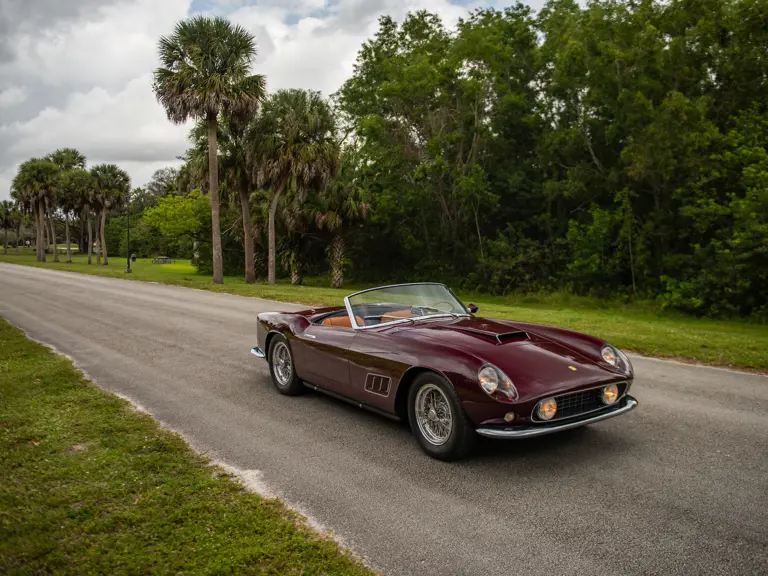
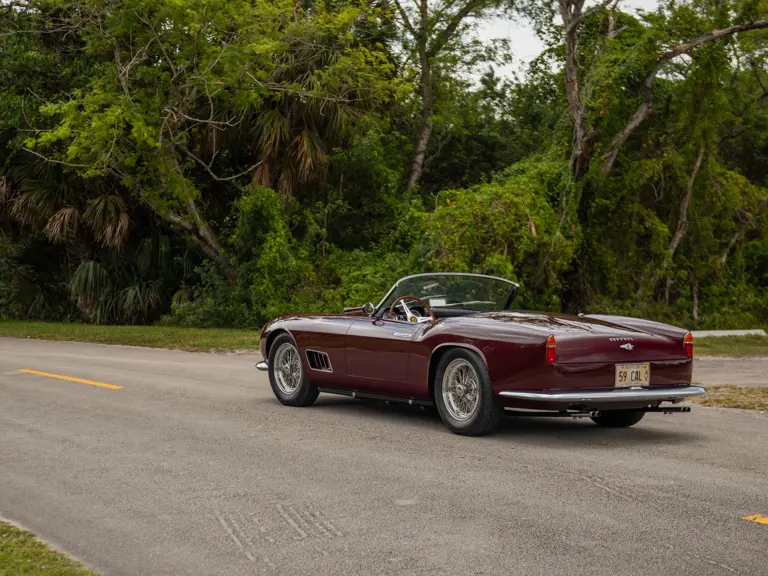
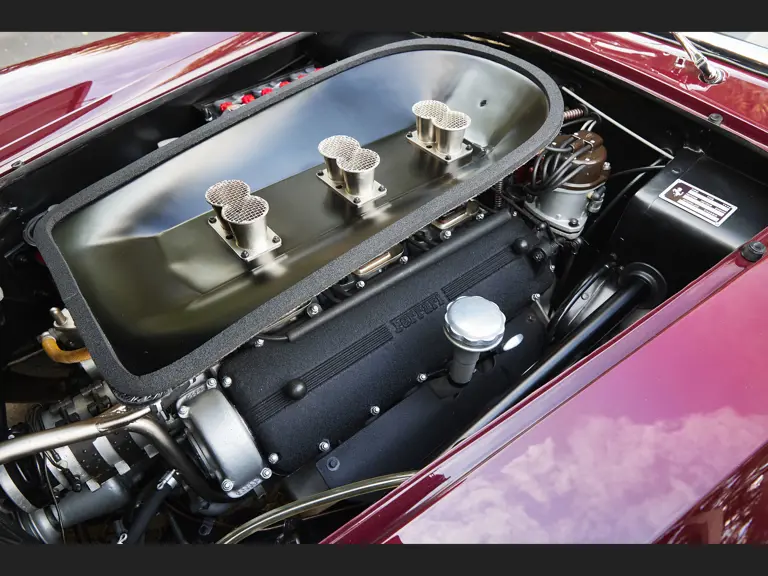
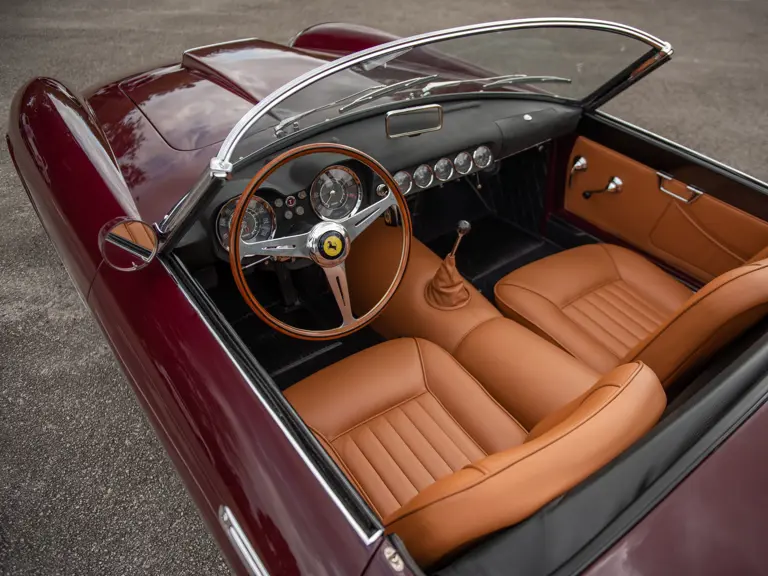
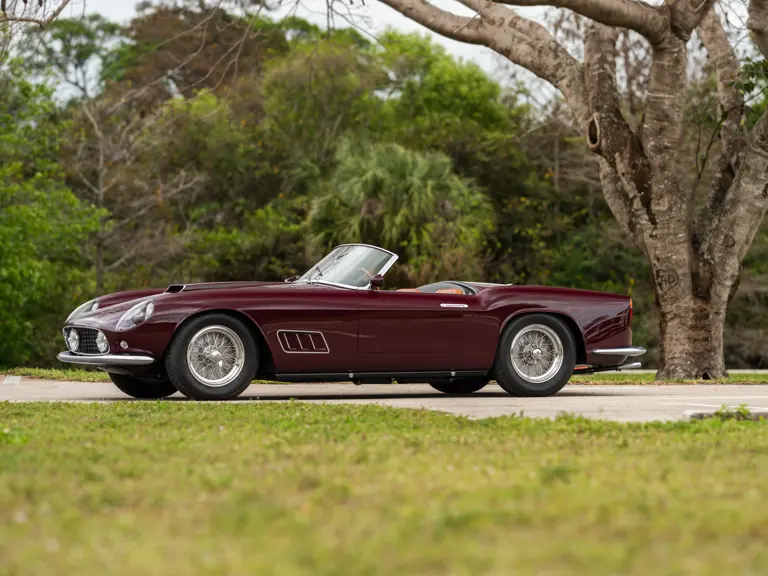

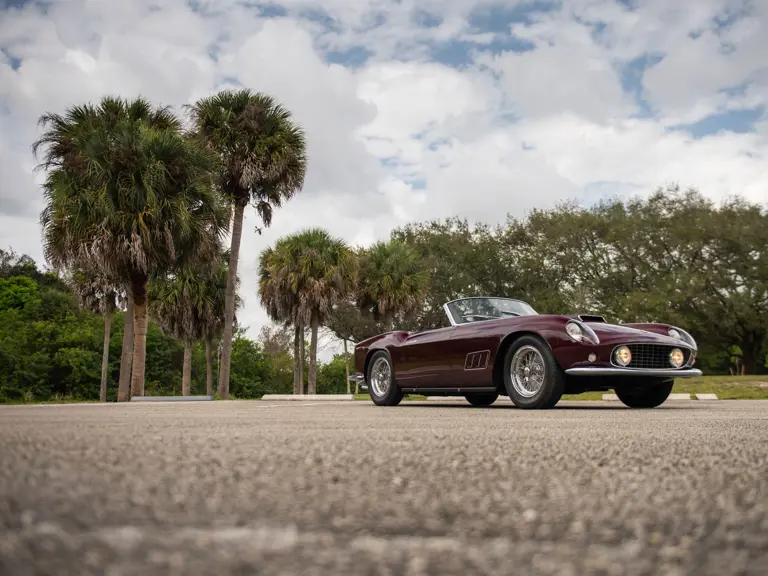
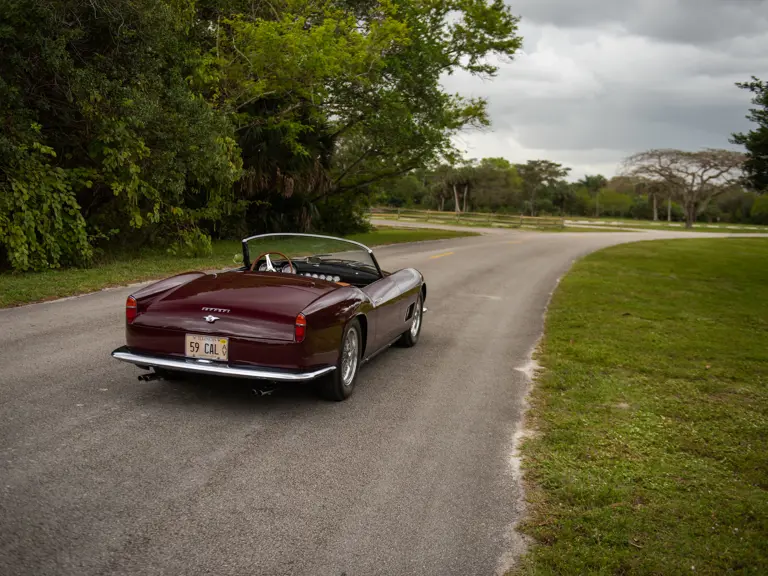
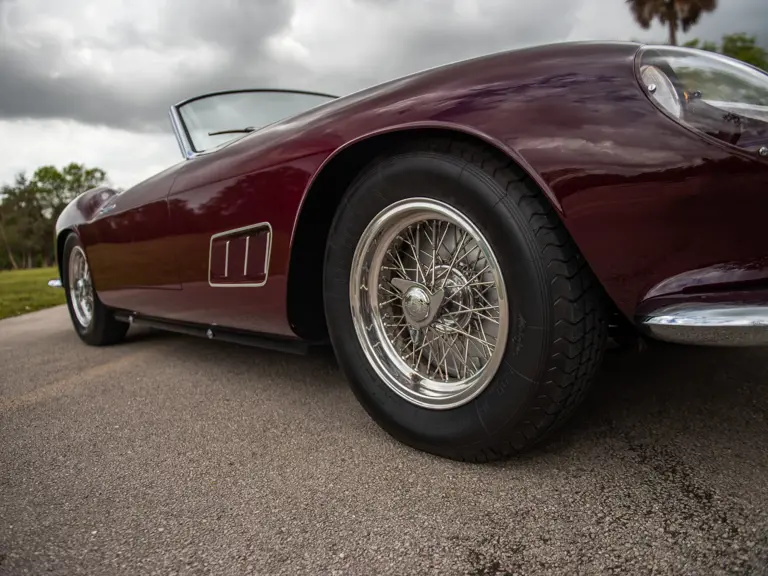

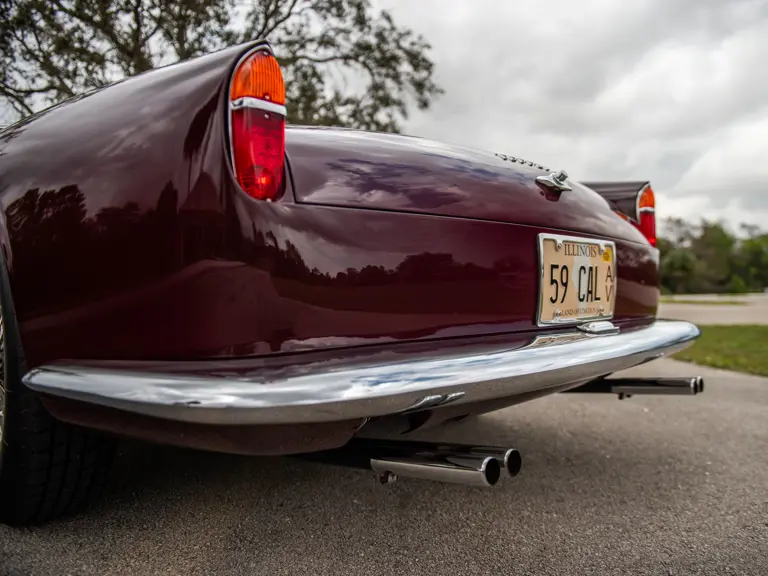


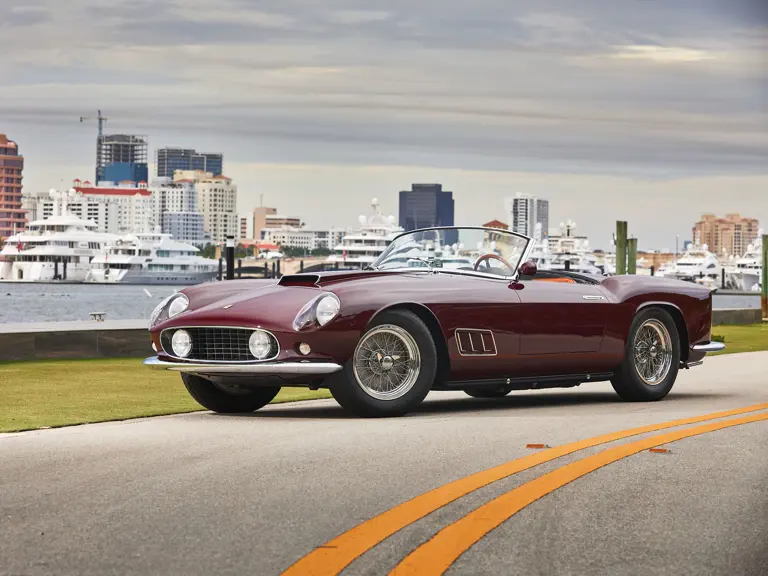



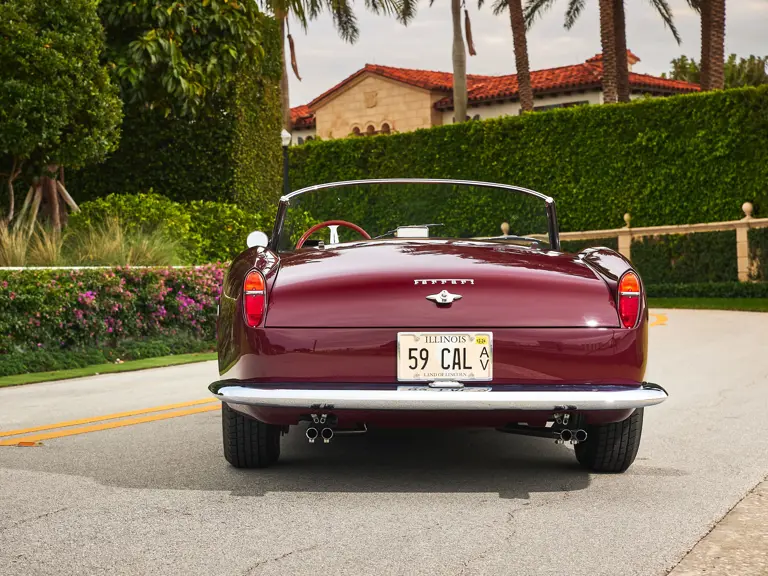
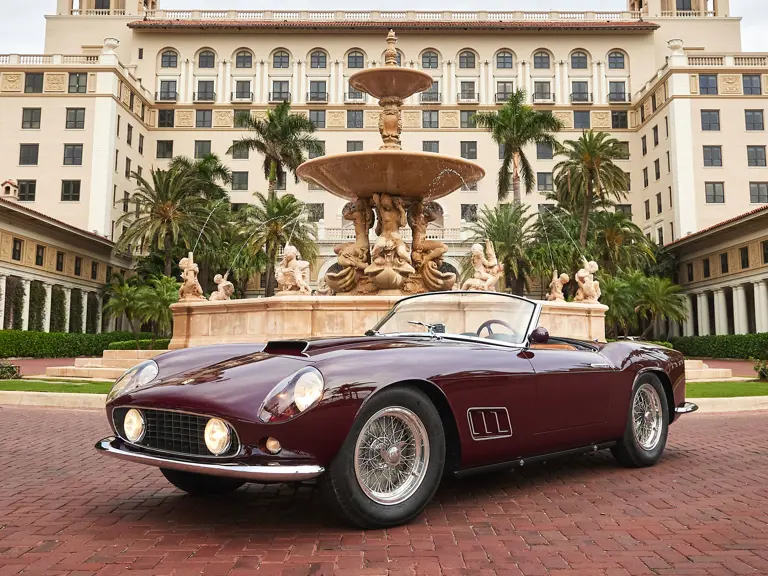


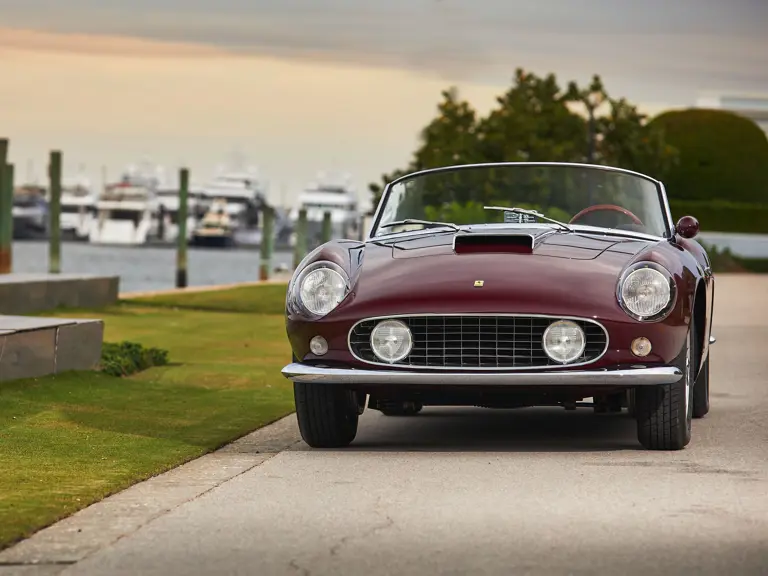

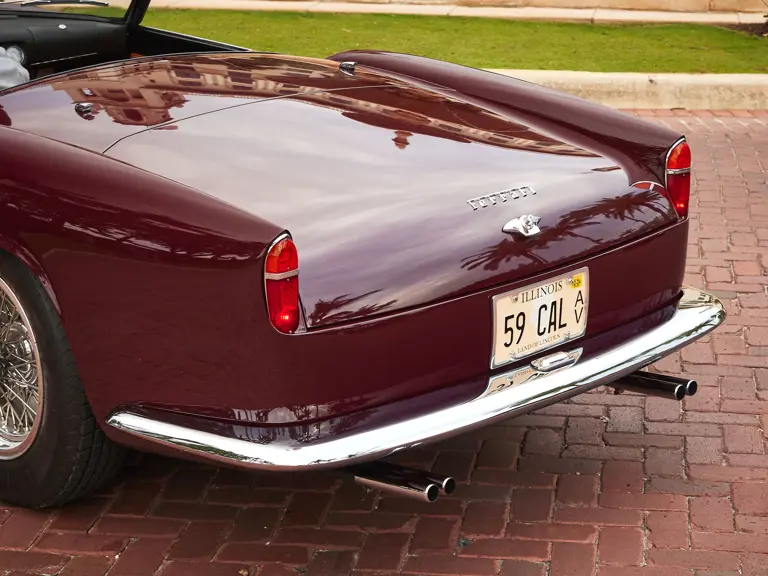


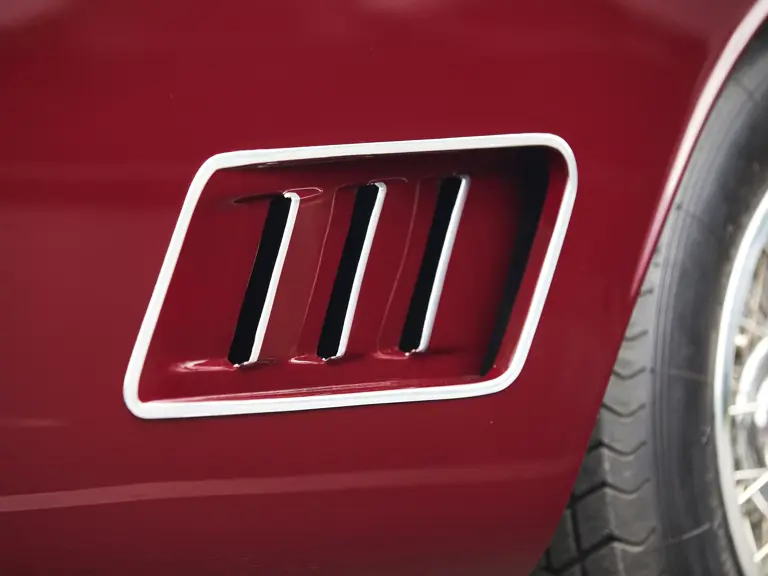

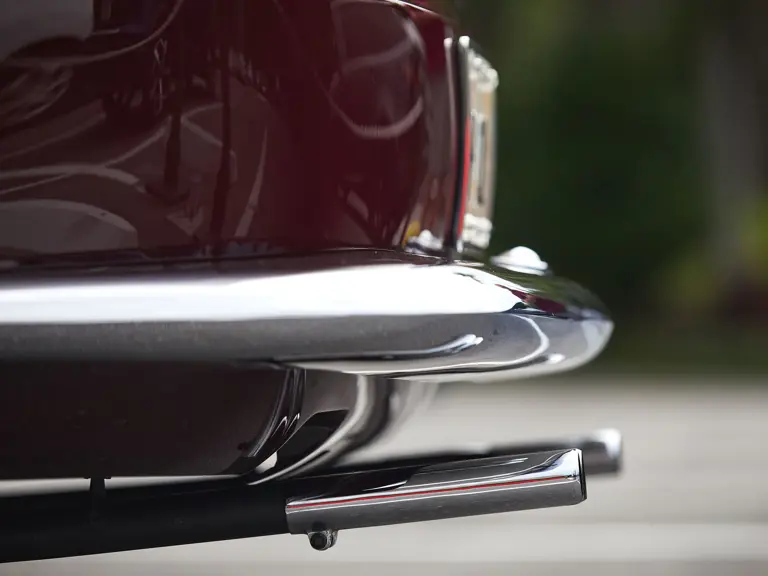

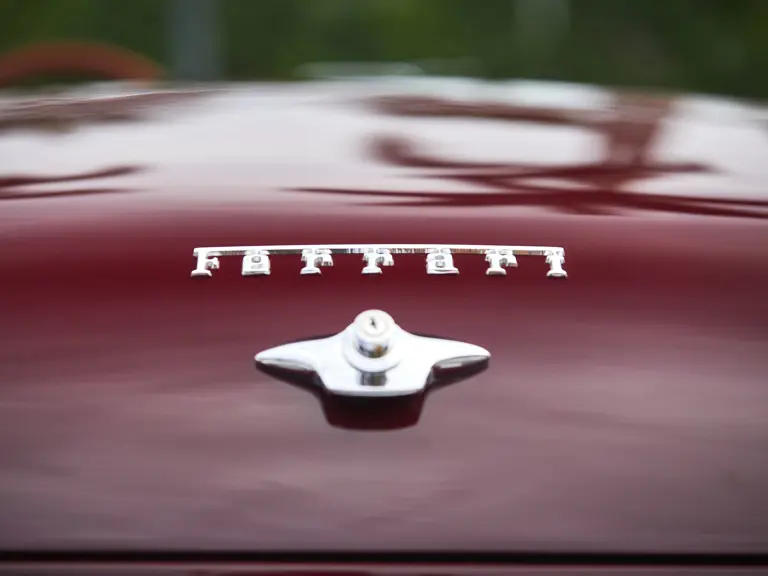

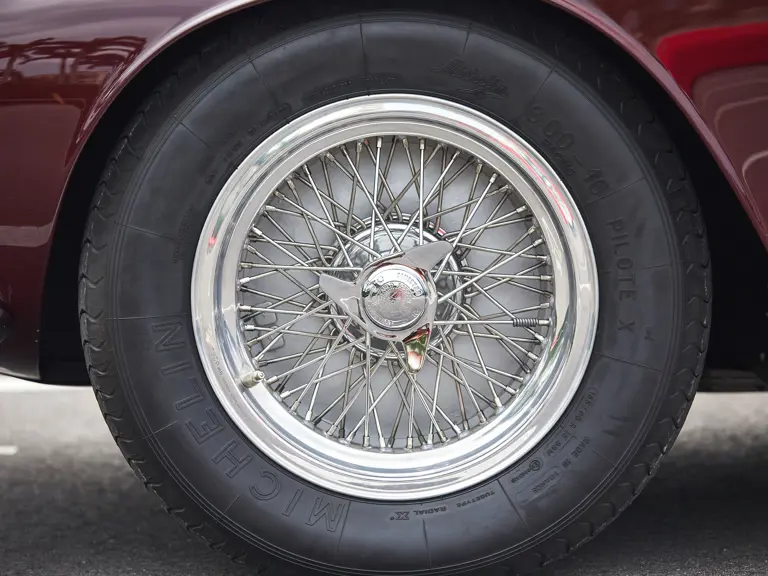





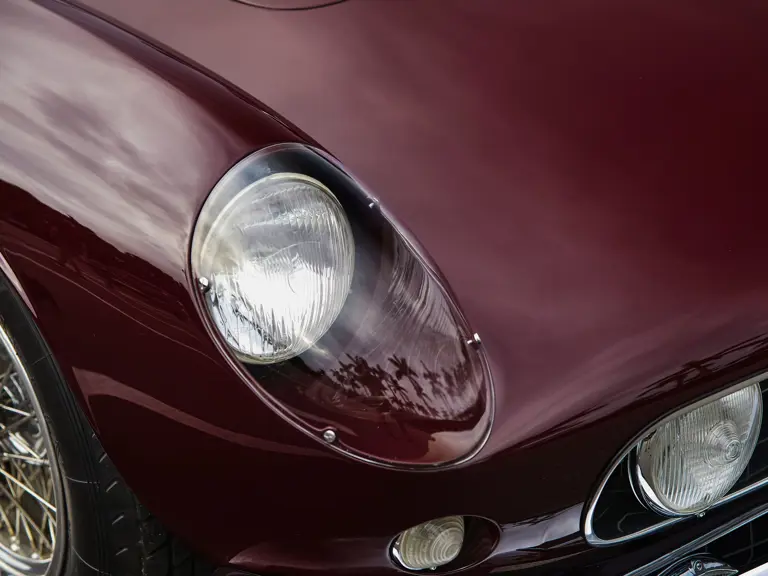
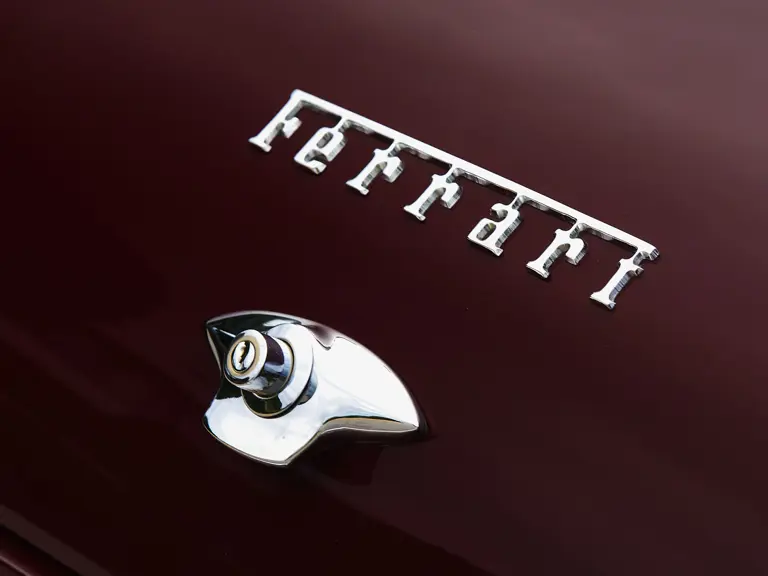


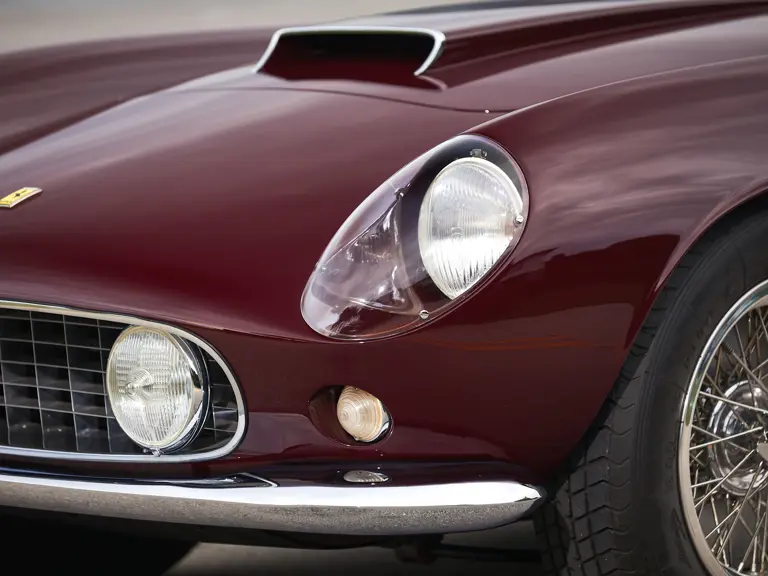

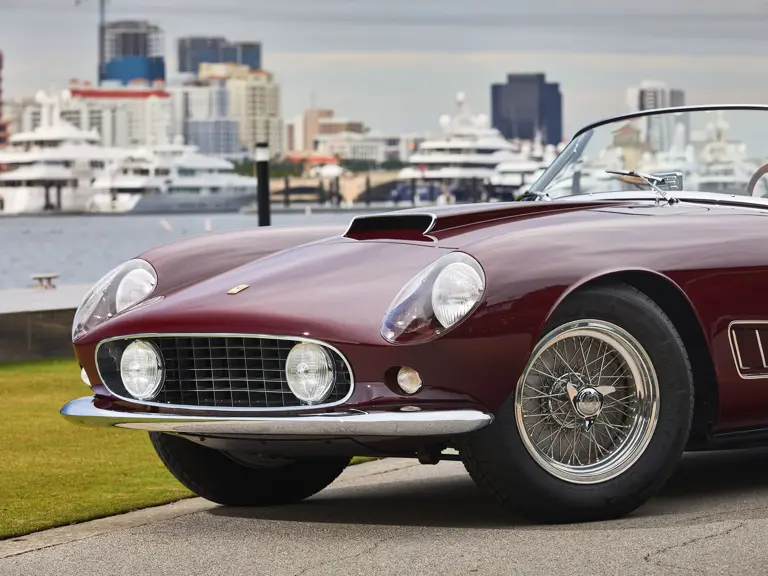
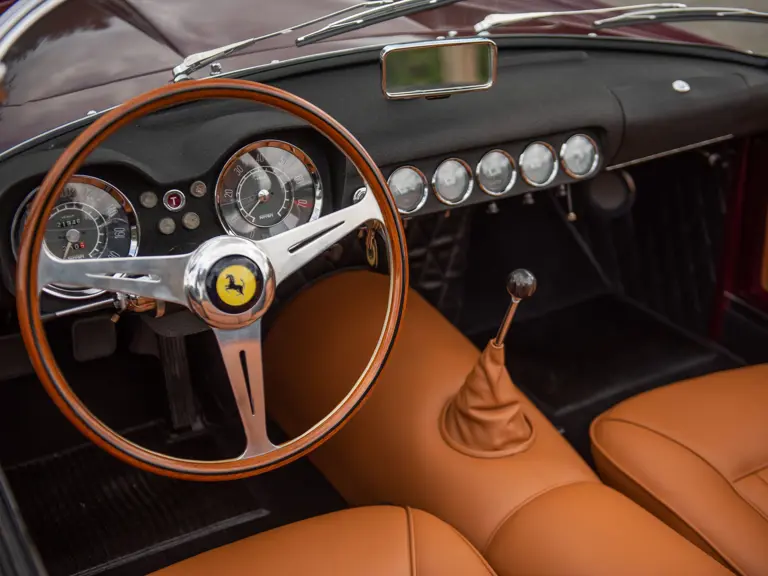


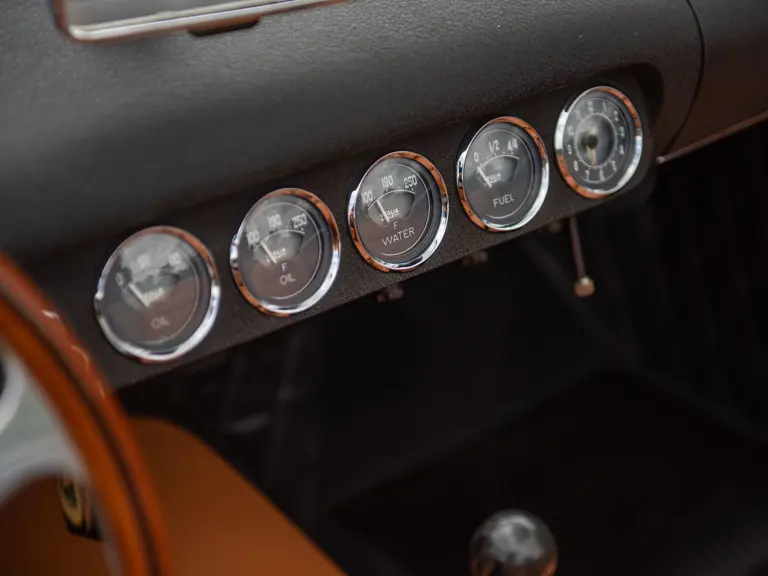
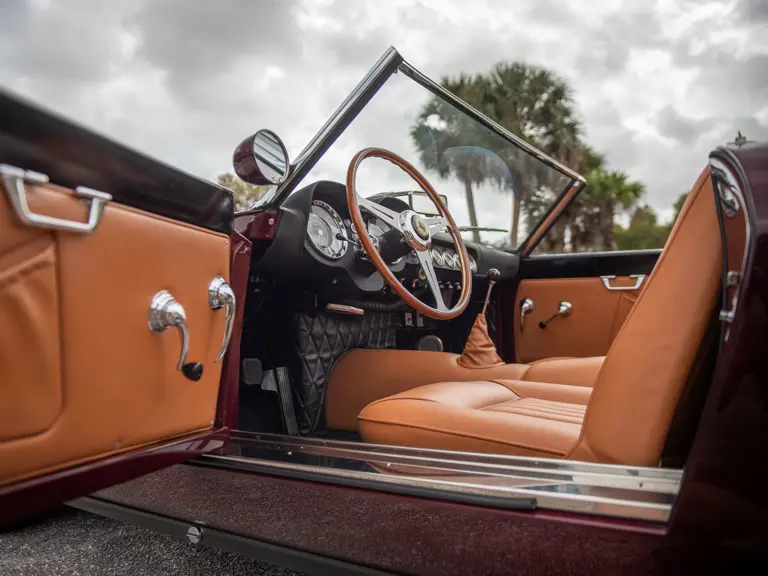
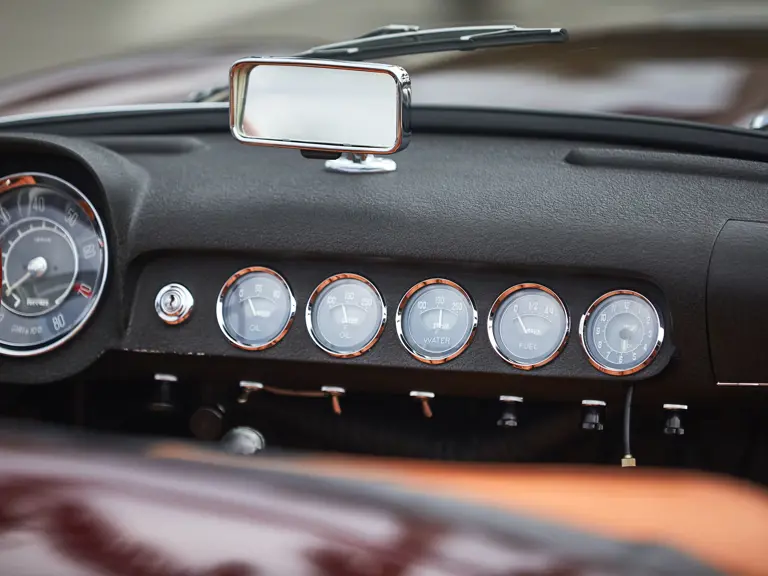
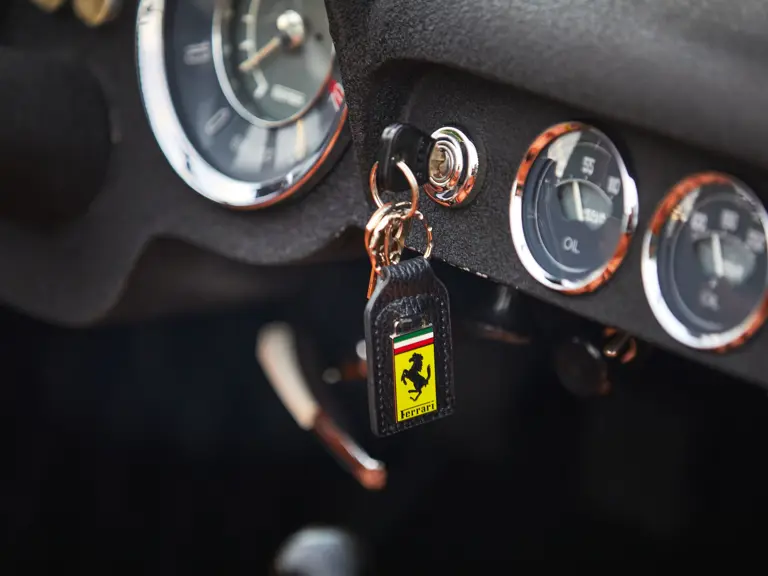
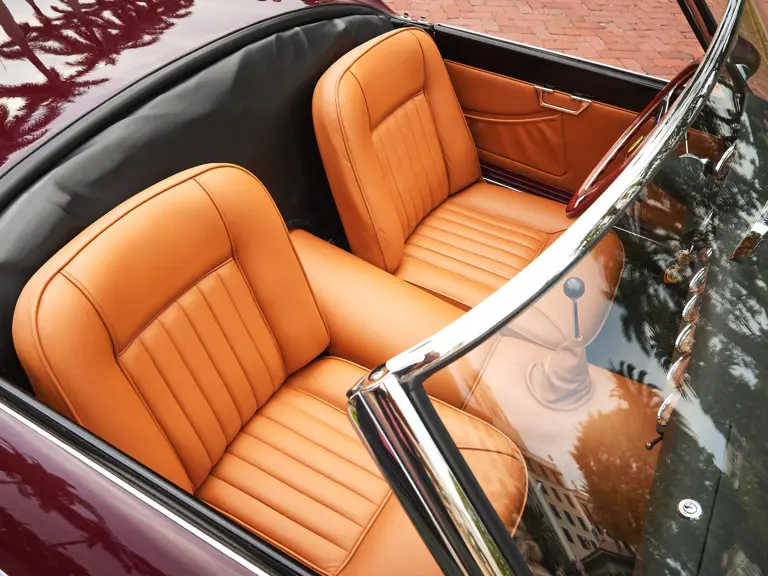
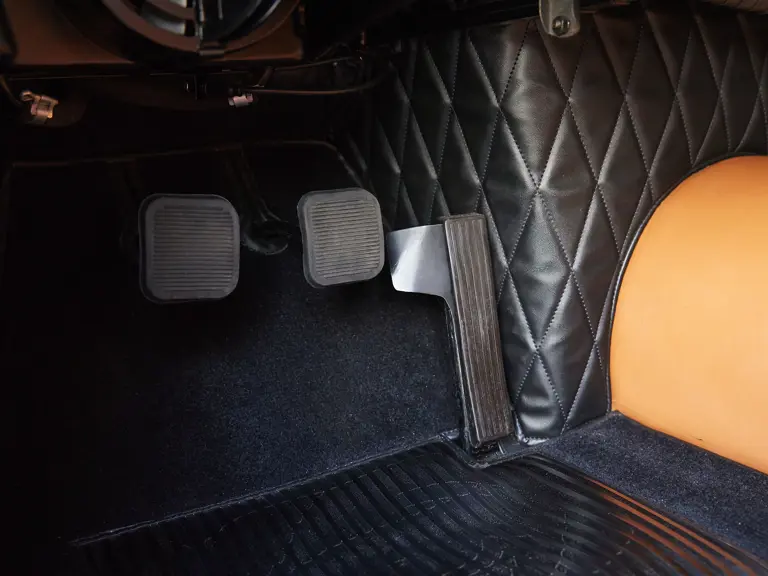

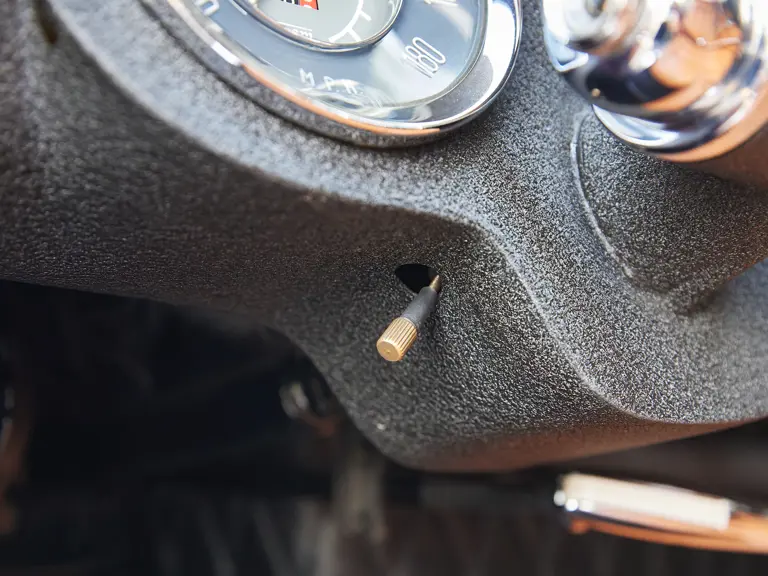

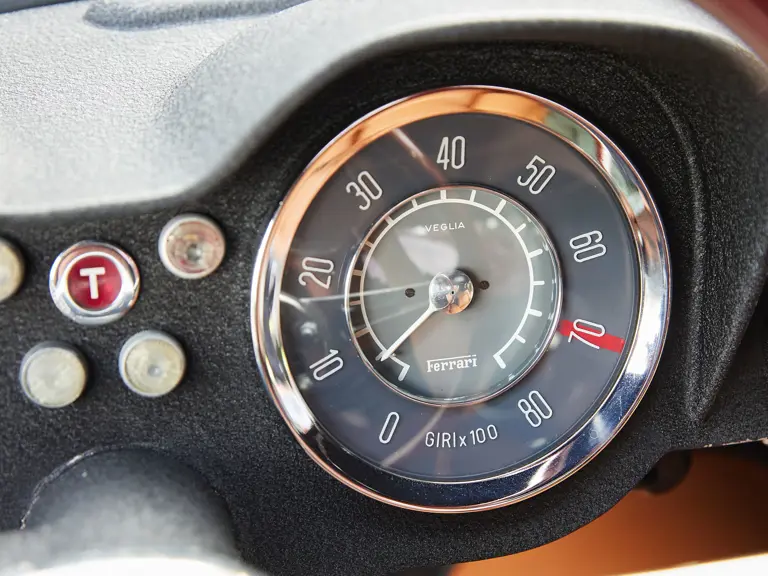

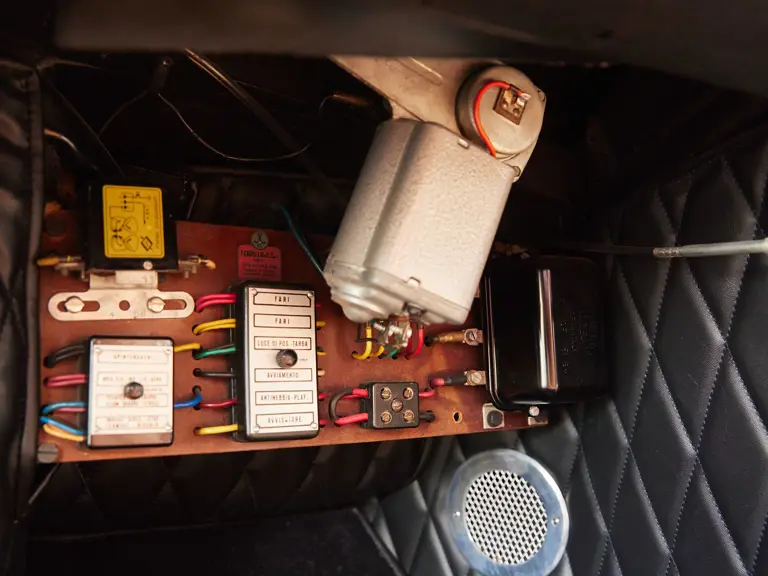
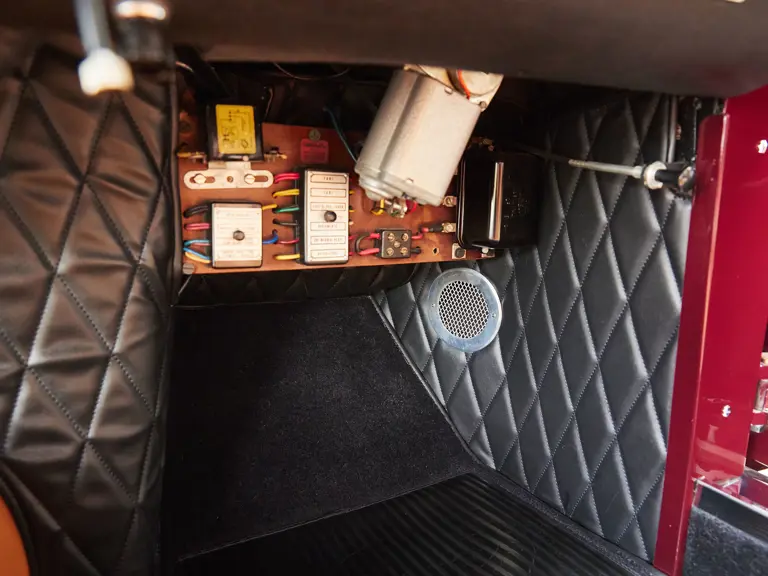
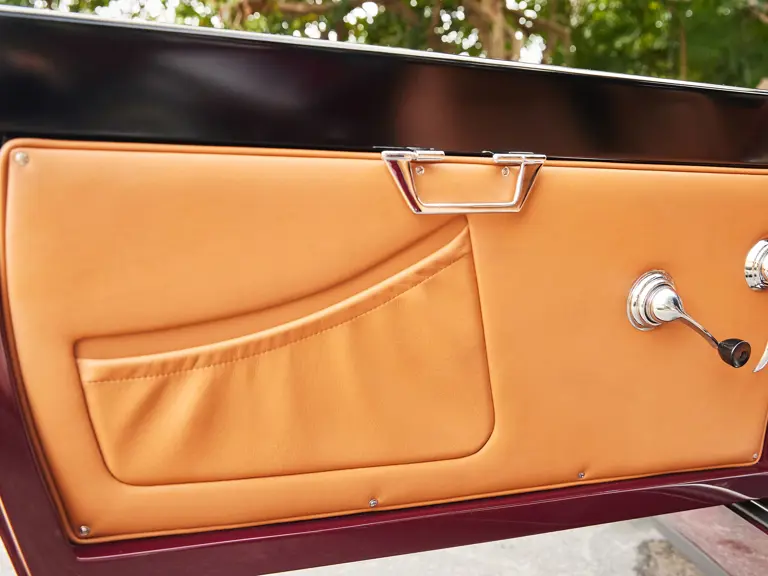
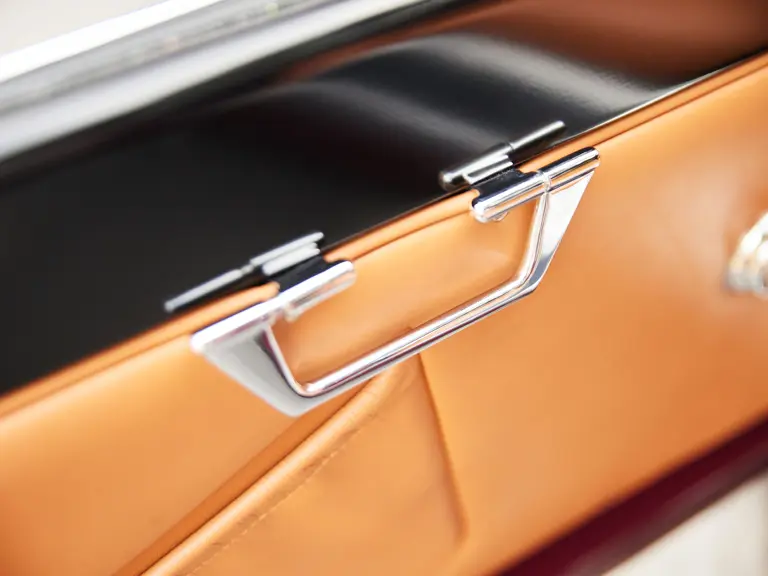


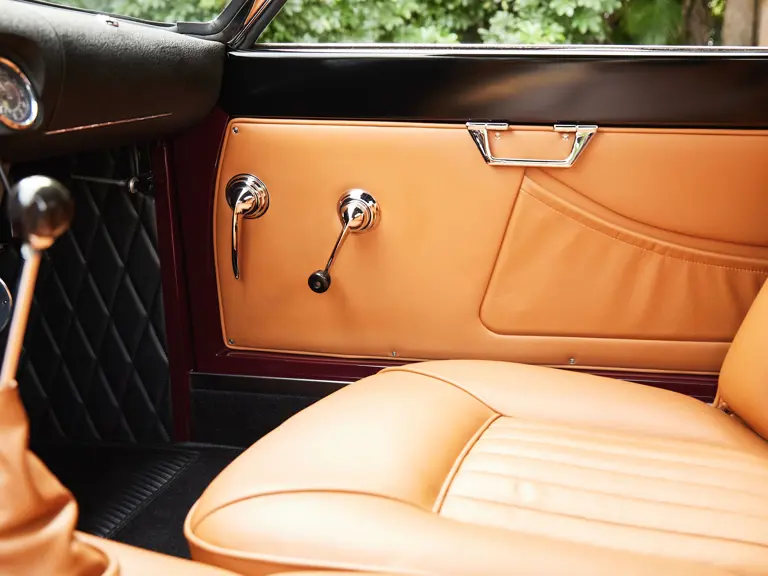
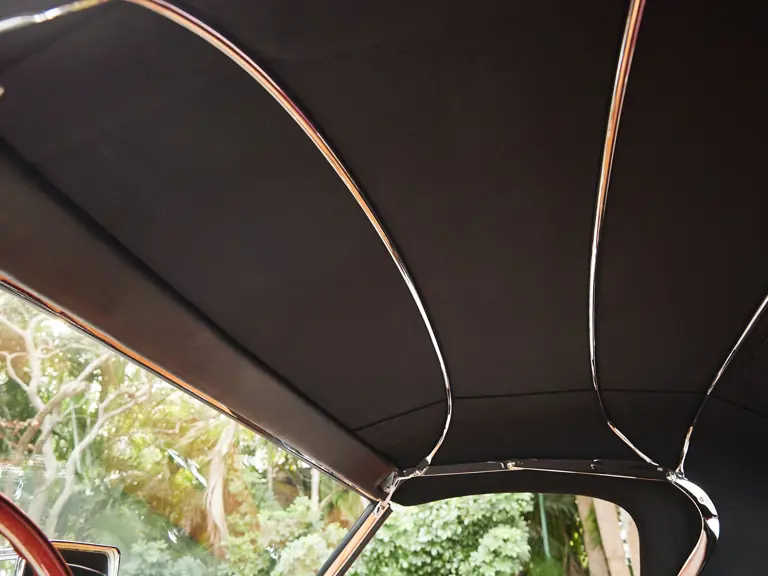
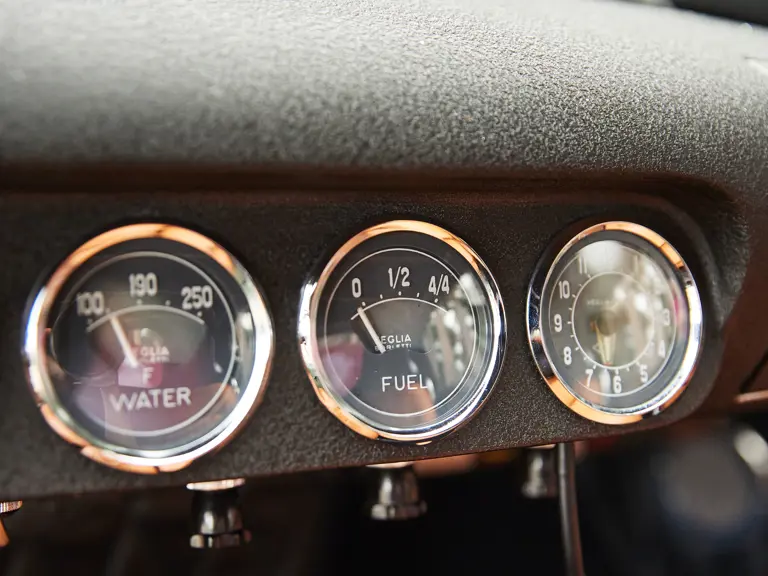







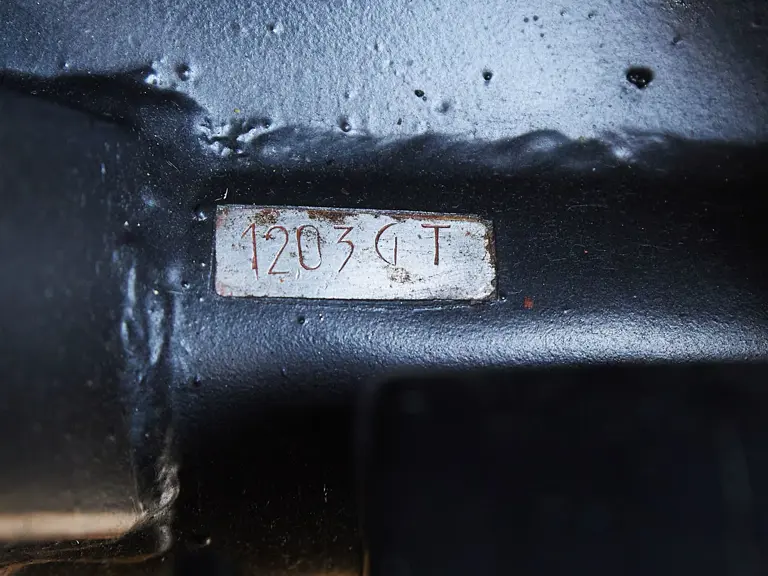
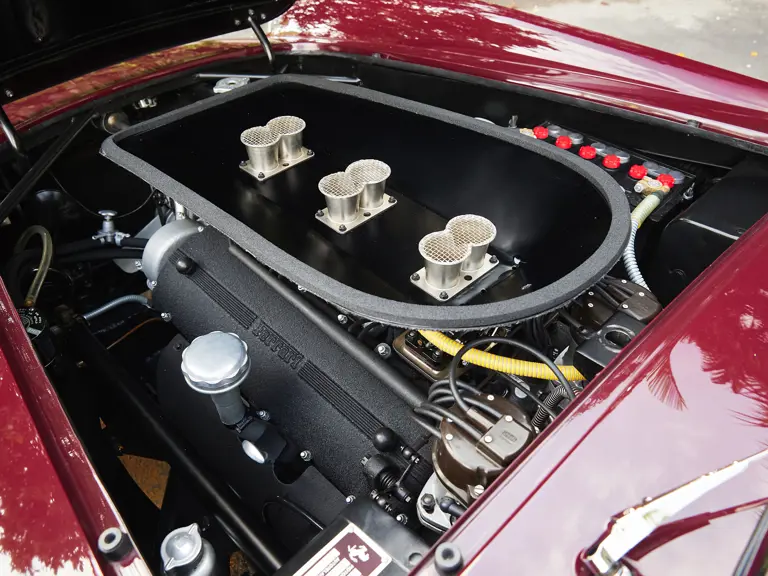
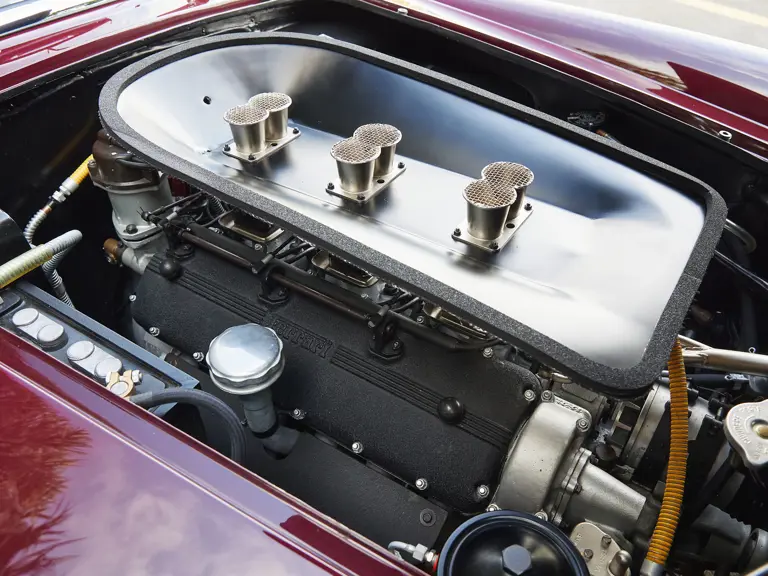

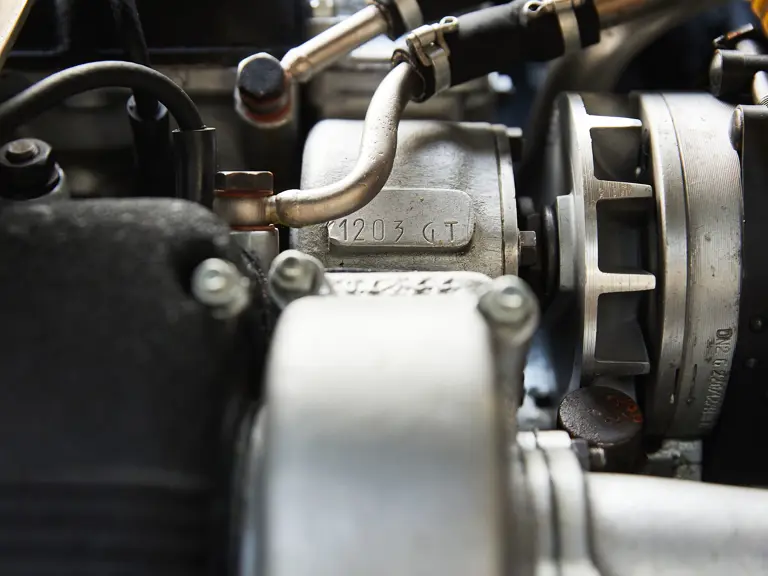



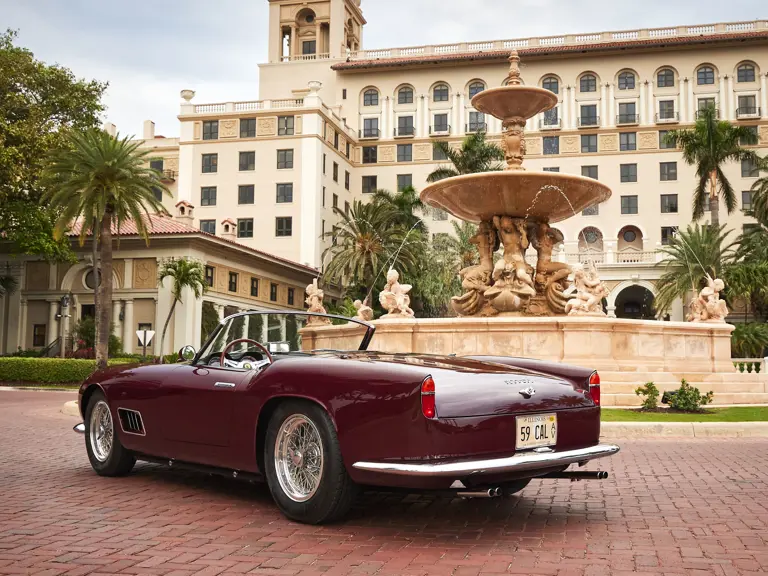

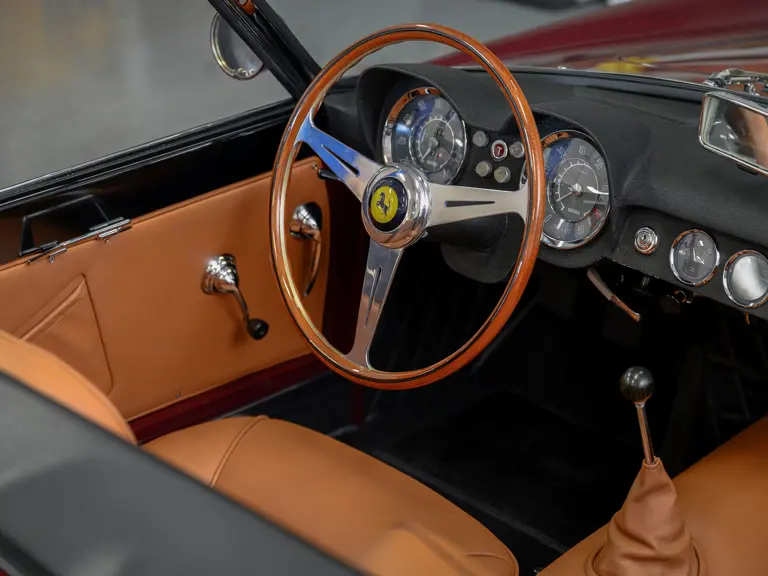


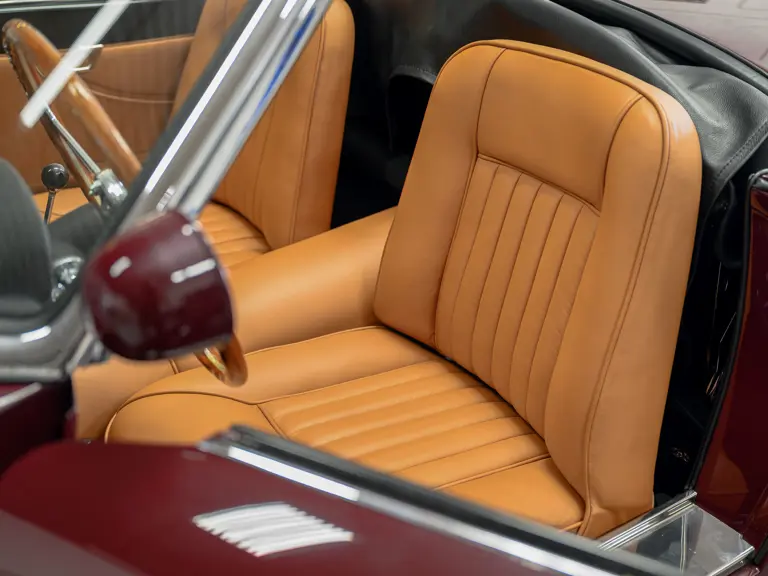
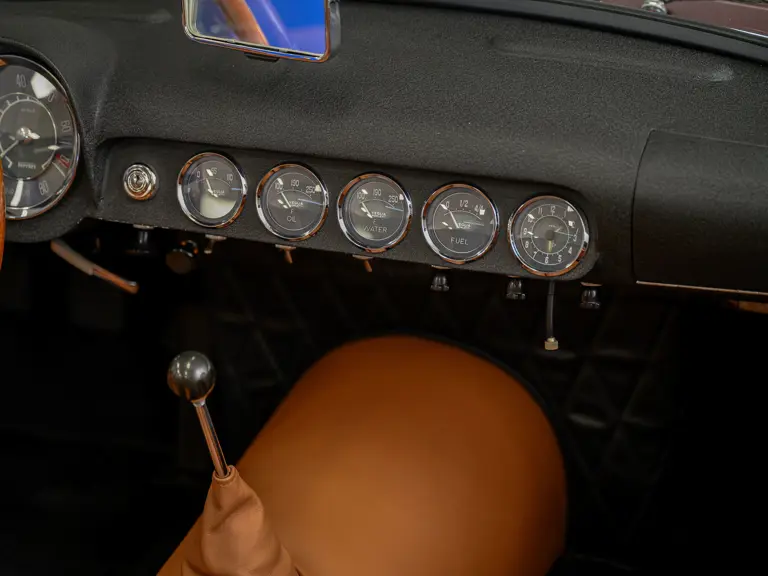
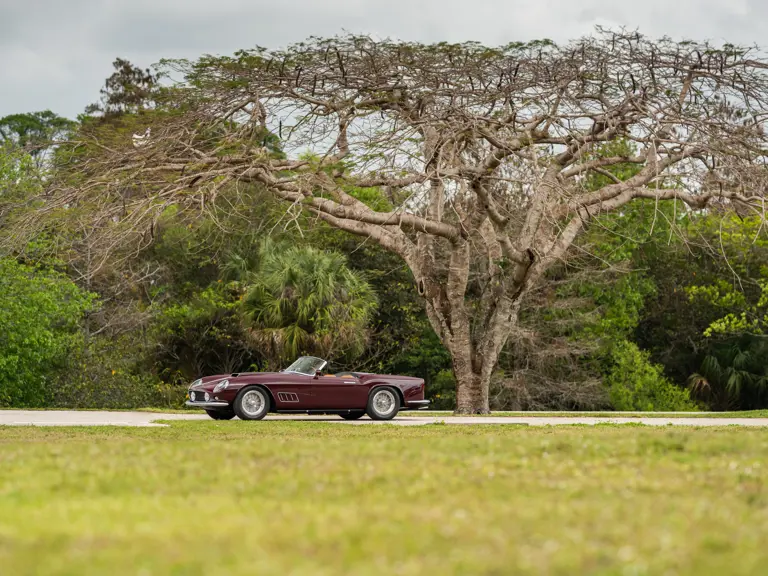
 | Amelia Island, Florida
| Amelia Island, Florida

